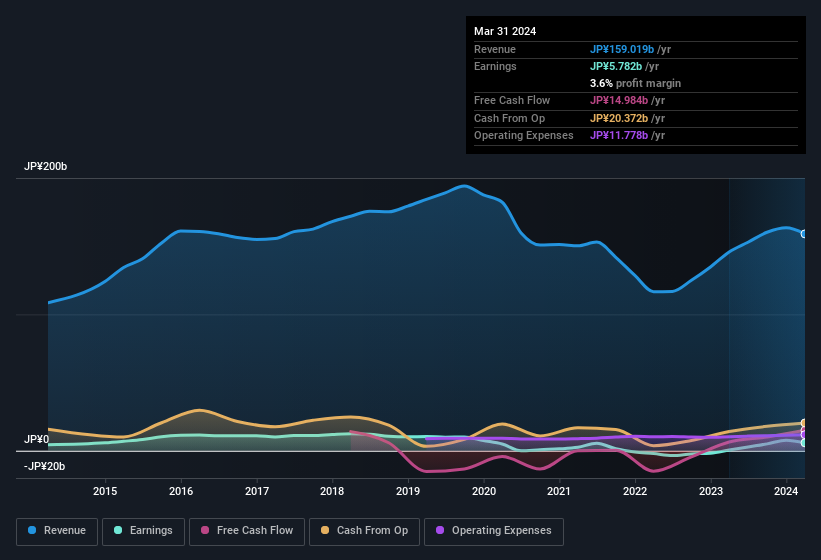- Japan
- /
- Auto Components
- /
- TSE:4246
DaikyoNishikawa's (TSE:4246) Solid Earnings Are Supported By Other Strong Factors
DaikyoNishikawa Corporation (TSE:4246) just reported healthy earnings but the stock price didn't move much. Our analysis suggests that investors might be missing some promising details.
Check out our latest analysis for DaikyoNishikawa

Zooming In On DaikyoNishikawa's Earnings
As finance nerds would already know, the accrual ratio from cashflow is a key measure for assessing how well a company's free cash flow (FCF) matches its profit. To get the accrual ratio we first subtract FCF from profit for a period, and then divide that number by the average operating assets for the period. This ratio tells us how much of a company's profit is not backed by free cashflow.
Therefore, it's actually considered a good thing when a company has a negative accrual ratio, but a bad thing if its accrual ratio is positive. That is not intended to imply we should worry about a positive accrual ratio, but it's worth noting where the accrual ratio is rather high. Notably, there is some academic evidence that suggests that a high accrual ratio is a bad sign for near-term profits, generally speaking.
Over the twelve months to March 2024, DaikyoNishikawa recorded an accrual ratio of -0.11. Therefore, its statutory earnings were quite a lot less than its free cashflow. In fact, it had free cash flow of JP¥15b in the last year, which was a lot more than its statutory profit of JP¥5.78b. DaikyoNishikawa's free cash flow improved over the last year, which is generally good to see.
That might leave you wondering what analysts are forecasting in terms of future profitability. Luckily, you can click here to see an interactive graph depicting future profitability, based on their estimates.
Our Take On DaikyoNishikawa's Profit Performance
As we discussed above, DaikyoNishikawa has perfectly satisfactory free cash flow relative to profit. Based on this observation, we consider it likely that DaikyoNishikawa's statutory profit actually understates its earnings potential! And on top of that, its earnings per share have grown at an extremely impressive rate over the last year. At the end of the day, it's essential to consider more than just the factors above, if you want to understand the company properly. Ultimately, this article has formed an opinion based on historical data. However, it can also be great to think about what analysts are forecasting for the future. Luckily, you can check out what analysts are forecasting by clicking here.
Today we've zoomed in on a single data point to better understand the nature of DaikyoNishikawa's profit. But there is always more to discover if you are capable of focussing your mind on minutiae. For example, many people consider a high return on equity as an indication of favorable business economics, while others like to 'follow the money' and search out stocks that insiders are buying. So you may wish to see this free collection of companies boasting high return on equity, or this list of stocks with high insider ownership.
New: Manage All Your Stock Portfolios in One Place
We've created the ultimate portfolio companion for stock investors, and it's free.
• Connect an unlimited number of Portfolios and see your total in one currency
• Be alerted to new Warning Signs or Risks via email or mobile
• Track the Fair Value of your stocks
Have feedback on this article? Concerned about the content? Get in touch with us directly. Alternatively, email editorial-team (at) simplywallst.com.
This article by Simply Wall St is general in nature. We provide commentary based on historical data and analyst forecasts only using an unbiased methodology and our articles are not intended to be financial advice. It does not constitute a recommendation to buy or sell any stock, and does not take account of your objectives, or your financial situation. We aim to bring you long-term focused analysis driven by fundamental data. Note that our analysis may not factor in the latest price-sensitive company announcements or qualitative material. Simply Wall St has no position in any stocks mentioned.
About TSE:4246
DaikyoNishikawa
Develops, manufactures, and sells automotive parts and synthetic plastic products in Japan.
Flawless balance sheet 6 star dividend payer.
Market Insights
Community Narratives




